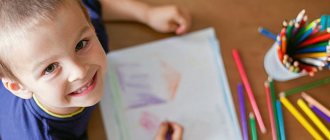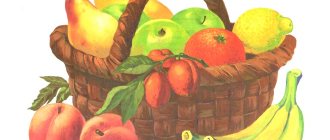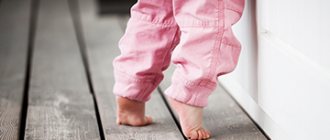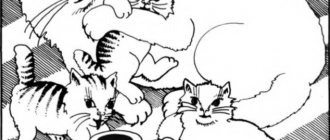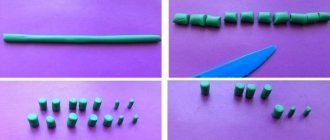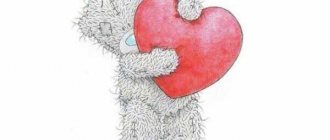Childhood is a golden time. There are so many new things to discover, experience, learn. A child's interest is limitless. Thousands of questions “why”, “how”, “why”. And it’s good if parents help you master such a complex but extremely interesting subject called “life.” Then all the skills, habits and even mistakes can in the future turn into a truly real and rare talent. For example, the talent of an artist. And even if in childhood the future genius did not know how to draw a kid, then soon entire generations will be able to admire the world-famous paintings of the great artist!
How to draw a kid: we teach from childhood
So, all children love to draw. They mostly draw what surrounds them - friends, family, animals and fairy tale characters. And even if not everything works out right away, you can learn to draw. At least with the help of simple instructions.
Let's look at how to draw a baby goat step by step at home. Not everything is as complicated as it seems. The main thing is to try. So, let’s sit back and imagine the future hero together with the baby. Let him graze on the green lawn and chew grass.
Topic of the week: “Pets”
Lesson 17. Baby goat
(Finger painting. Gouache)
Target. Continue teaching children to draw dots with their fingers, placing them close to each other. Learn to analyze and understand the content of a poem. Develop fine motor skills of the hands. Teach children to describe the appearance of animals.
Demonstration material. Toy kid.
Handout. A landscape sheet with a silhouette of a kid drawn on a green background, gouache, a bowl of water, a rag.
Progress of the lesson
Invite the children to clench their hand into a fist, leaving the index finger and little finger unbent. Ask: “What horned animal have you drawn?” (Cow, bull, goat.)
Read A. Barto’s poem “Little Goat” to the children:
I have a little goat,
I herd him myself.
I'm a kid in a green garden
I'll take it early in the morning.
He gets lost in the garden -
I'll find it in the grass.
Ask: “Who is this poem about? (About a girl and a kid.) Where does the girl take the kid in the morning? (To the green garden.) What can a kid goat do in the garden? (Walk, pick grass, run, play.) Consider a toy kid with your children; determine that it has a torso, a head, four legs, a tail, horns, and fur. Ask: “What kind of fur does the baby goat have?” (White, soft, fluffy.)
Give each child a landscape sheet with a silhouette of a kid drawn on a green background, and tell him that the little goat is cold and has no fur. Offer to draw fur for him.
Show the kids how to dip the tip of their finger into white paint and make dots on the silhouette of the baby goat. The points should fit tightly to each other. Say: “Now the little goat is warm.”
You can draw green grass around the baby goat with your finger.
Let's start drawing
First, let's draw a small oval. This is the head. Let's draw the main details: eyes, nostrils, mouth. Add ears and horns on top. From the head, draw two lines slightly upward. This is the neck. This is how the head tilt turned out. We continue the line from the neck and draw the back. Further, in any instructions on how to draw a kid, it is usually indicated that the neck and back should be connected to an oval larger than the head. This is the body of the future goat.
Now we draw the legs. Let's start with the front ones, let them be slightly bent. At the back, draw a straight line and divide it approximately in half. This is the back leg of the animal. And the marked middle of the line is the bend of the leg. No, let the top be a little longer. Don't be afraid to make mistakes while working. There are no established templates for goats, and anything that doesn’t quite work out can be quickly removed with an eraser or called “the author’s idea.” By the way, our instructions are also suitable if you don’t know how to draw a kid from a fairy tale - there’s not much difference.
So, having drawn the back leg, let’s add another one nearby. Let's draw the hooves below. Let's do the same with the front legs. Then add a small ponytail. Let's draw the fur. It is not as curly as a sheep's, but quite thick and slightly wavy. And this must be visible in the figure. Below we will outline the grass and flowers - this way the composition will look more complete and complete. While working, you can tell your child what kids eat, who their parents are, and that they, like all children, love to play and run. Such a lesson will not only teach you how to draw a kid, but will also remain in your memory for a long time. Having finished the drawing with a simple pencil, trace it along the contour with black paste and erase the contours with an eraser. Now you can make it color.
Theme of the week: “Pisces”
Lesson 19. Aquarium with fish
(Drawing with watercolors)
Target. Continue introducing children to watercolor paints; learn to draw a round object and carefully paint over it. Cultivate compassion and kindness.
Demonstration material. Toy cat.
Handout. A landscape sheet on which fish are drawn with wax crayons, watercolor paints, a brush, a jar of water.
Progress of the lesson
Place in front of each child a landscape sheet on which fish are drawn with wax crayons; read the poem by M. Kaminskaya:
Here is an aquarium, and in it
The fish are splashing.
In their glass bright house
Don't let the cat get in.
Show the children a toy cat.
Cat . Hello guys! How many fish do you have? I want to eat them quickly.
Invite the children to draw a round aquarium and “pour” water into it (paint it over). Show them watercolor paints and explain that when painting with watercolors, you need to put more water on the brush - then the fish will remain unpainted.
Once work is completed, the aquariums can be cut out.
At the end of the lesson, tell the children: “What a great fellow you are - the cat didn’t have time to eat a single fish!”
Decorate it - and you're done!
Ask your child to choose the color of pencils for your picture. Don’t be surprised if he wants to paint the animal not white, but, for example, blue and orange, the grass pink, and the sky purple.
There is no need to ban it and say that it is wrong. Children perceive the world around them in their own way. And often not at all like us adults. The main thing is that today they have learned how to draw a kid, and soon they will be ready to perceive information about the rules for using color. By the way, such a drawing can also be done with paints. The algorithm itself remains the same. Over time, having mastered the basics of drawing, you will be able to do without a simple pencil. Although it is more convenient for anyone. After all, this is a matter of taste and habit.
Preview:
Summary of direct educational activities (middle group). “The little goats ran out for a walk on the green meadow.”
Goal: to teach children to draw four-legged animals, compare them, see what they have in common and what is different, and convey fairy-tale images; consolidation of the ability to work with a brush and paints, knowledge that all four-legged animals have an oval body; development of figurative representation, imagination, creativity; nurturing responsiveness and desire to help the heroes of the fairy tale.
Educator: Guys, an unusual guest came to us today. And you will find out who she is when you solve the riddle.
She is an animal from a fairy tale
Where I almost ate it
All seven of her children. (Goat.)
Educator: Guys, have you already guessed these are the heroes of which fairy tale? Did you recognize the fairy tale?
Educator: Guys, look, the goat is sad. Why do you think?
- Let's draw where the kids are running and frolicking on the green meadow.
Educator: Before we start drawing, let's take a good look at the kid so that we can draw it beautifully. (Teacher shows a toy kid)
(Children examine the kid and mark the body parts.)
Educator: The goat has a body, (Child’s name) what shape is the body?
Head, (Child's name) what shape is the head? (Child's answer.)
How long is the ponytail? (Child's answer.)
Educator: Guys, what kind of fur does the kid have? (Children's answers: white, soft, fluffy.)
The teacher invites the children to draw how the little goats walk, run and frolic on the green meadow.
Demonstration and explanation of drawing methods.
The teacher, if desired, calls one child to the board for display, and together with him draws a kid.
Educator: Guys, look, our guests are completely bored. Let's play with them.
Like our kids (bending over with horns)
Sounding palms. (claps)
Like our kids (bending over with horns)
Naughty legs. (jumps)
The kids were walking along the path, (walking) They saw a stream. (hand to forehead)
To prevent your feet from getting wet
Jump and jump. (jumping)
Now you can rest
Educator: So we played a little and rested. Now let's say these words:
Well done! Let's get to work.
Educator: When you draw a kid, do not forget to draw eyes, a nose, and a mouth on the face. Draw carefully with the tip of the brush. The goat, the goat and I will watch you draw.
The teacher turns on the music, provides individual assistance during the drawing process, monitors posture, if the child quickly finishes the drawing, gives the opportunity to draw another kid in the rows with the first one or multi-colored flowers in the meadow.
Goat: How cute your little goats turned out, how you guys helped me.
Educator: Now the time has come for us to say goodbye to the goat and kids, they still have to go to a fairy tale. Goodbye!
Little Goat: See you again!
Educator: What beautiful kids you drew. They are all so different.
I think the goat liked our drawings.
Educator: What did you do today?
Educator: - Who liked their work and why?
Well done! You helped the goat with her kids find herself in a fairy tale again.
Source
GCD move:
Educator: Guys, today I want to introduce you to the four-legged animals goat and kid , reading the fairy tale “The Wolf and the Seven Little Kids ”
, looking at illustrations for a fairy tale.
Educator: Who and what is this fairy tale about (Children’s answers)
The teacher shows a picture of a kid . Children look at the picture and mark body parts.
— A goat has a body , a head, four legs, a tail, horns, and fur.
Educator: Children, what kind of fur does the kid ? (Children's answers)
The teacher hands out green A4 sheets of paper to the children and invites the children to finish drawing the baby goat and coloring them.
The teacher shows and explains drawing , shows the children how to dip the tip of the brush into white paint and draw the silhouette of a kid in parts , starting from the head. After the baby goat and its mother are drawn and painted .
We walk through the forest together, don’t rush, don’t lag behind. (stomp our feet)
Here we go out into the meadow, a thousand flowers around.
Our bright flowers are opening their petals. (with our hands we show a flower, a bud)
The breeze breathes slightly, the petals sway. (we wave our hands)
Our bright flowers cover the petals.
They shake their heads and quietly fall asleep. (we shake our heads one way and the other)
At the end there is an outdoor game “Wolf and kids ”
The finished drawings are hung on the stand.
A dramatization of the fairy tale “The Naughty Goat” as part of a group activity. In my 2nd junior group, I lead the “Merry Show” club aimed at developing speech through theatrical activities in younger children.Summary of a drawing lesson in the middle group “Little Goat in the Meadow”
Evgenia Gusarova
Summary of a drawing lesson in the middle group “Little Goat in the Meadow”
Summary of a drawing lesson in the middle group “ Little Goat in the Meadow ”
Topic: “ Little goat in the meadow ”
( Brush painting . Gouache)
.
Continue to exercise children in drawing with paints and brushes; to develop in children the ability to draw a baby goat , conveying the shape of body parts and correlating sizes.
Develop figurative perception and imagination.
Develop fine motor skills of the hands.
Teach children to describe the appearance of animals.
Cultivate accuracy and creativity.
Individual work: help Olesya S., Daniil M., Mark O. draw the silhouette of a kid without going beyond the outline and color it.
Drawing "Goat and kid"
Catherine
Drawing "Goat and kid"
Abstract of GCD for visual activities ( drawing )
in the middle group "Mom and
Little Goat "
Goal: To consolidate children's ability to draw four-legged animals. We reinforce the knowledge that all four-legged animals have an oval body. By comparing animals, we see common and different. Develop imagination, creativity, figurative representations of the animal, also convey fairy-tale images, work correctly with a brush and paints.
Materials: Landscape sheet with half-drawn animals , paints, brushes, jars of water,
pictures from the fairy tale wolf with seven kids .
